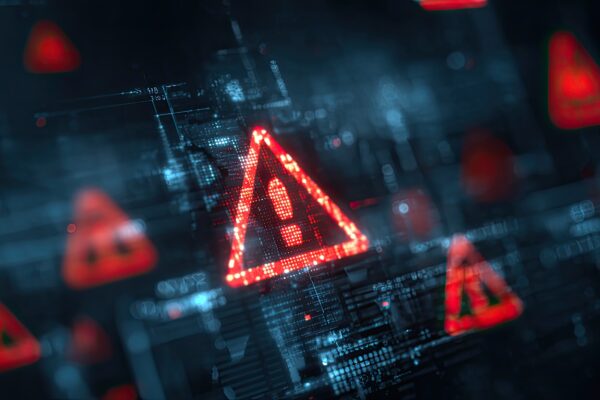The EDR mistakes that put businesses at risk
Endpoint detection and response (EDR) has always been about stopping advanced threats before they spread. In 2025, the challenge extends beyond simply identifying malware signatures or flagging suspicious activities. Attackers are exploiting the realities of how lean IT teams operate.
Lean MSPs or internal IT teams already struggle to keep pace with patching, ticket queues and compliance audits. In this situation, each additional alert from their EDR represents a trade-off: Do they stop what they’re doing to investigate or do they risk letting something slip? When multiplied across hundreds of endpoints, it becomes evident that endpoint detection that overwhelms is just as dangerous as endpoint detection that fails to identify issues.
That’s why the real value of endpoint detection today is not in how much it can see, but how effectively it can guide action.
The rising challenge of endpoint security
Modern attackers no longer rely solely on malware. They’re using tactics that turn IT teams’ own tools against them:
- Living-off-the-land attacks. A PowerShell script here, a WMI call there and suddenly, the endpoint is compromised without deploying a single piece of traditional malware.
- Ransomware with extortion. It’s no longer just about locking files. Attackers threaten to release sensitive data, forcing MSPs and IT professionals into business-risk conversations they were never prepared for.
- Supply chain compromises. One compromised vendor or software update can cascade into dozens of client environments in hours.
For lean teams, this creates an impossible equation. If every alert is treated as critical, you burn out. If you ignore too much, you miss the signal in the noise. Many EDR tools have been designed for enterprises with large SOCs so pushing the burden of scripting, tuning and manual triage onto fully staffed security teams isn’t an issue. For lean teams using an enterprise-focused EDR means they can drown in security alerts and miss critical threats.
We’ve seen that EDR adoption is surging. The Kaseya 2025 global IT trends and priorities report shows EDR is the rising star of cybersecurity investments. Among mid-market enterprises, adoption has jumped from 49% in 2024 to 65% in 2025, making it the most widely adopted IT management tool in this year’s survey. Organizations adopting EDR can’t afford to choose a tool that isn’t a fit for their organization.
What good EDR looks like in 2025
A strong endpoint detection and response strategy in 2025 doesn’t mean throwing more tools or dashboards at the problem. It means solving for clarity and action. Let’s break down what that looks like:
- Actionable insights over noise: Imagine a technician juggling multiple things during the day. Instead of being drowned by 50 alerts as well, they get one prioritized notification: “Suspicious PowerShell activity contained and quarantined. Review required.” That’s the difference between noise and insight.
- Built-in remediation: The tool should not only identify a fire but also activate the extinguisher to put it out. Automated isolation and remediation take the pressure off lean teams.
- Seamless integration: Good EDR doesn’t live in a silo. It integrates with AV, MDR and SIEM, so context is carried across tools. Without that, teams waste time cross-referencing systems instead of responding.
- Cloud-native by design: Threats evolve rapidly, and EDR must adapt just as quickly. Scalability and instant updates are critical to survival in today’s fast-paced environment.
- Independent validation: While vendors all claim effectiveness, independent testing, like the evaluations performed by Miercom, separates marketing claims from measurable results.
This is not just a theoretical concept. These are the minimum requirements for effective endpoint detection in environments where lean IT teams and MSPs cannot afford to waste time.
How to evaluate if your EDR is still effective
The simplest way to test whether your EDR is serving you, or draining you, is to ask a few hard questions:
- Do your technicians know which alerts matter most, or do they spend more time triaging than resolving?
- When a threat is detected, does your EDR help contain and fix it, or does it just send another ticket to the queue?
- Can the platform adapt quickly to changes in your client environments, or does it demand constant manual tuning?
- Has it been validated by independent testing, or are you trusting vendor claims alone?
If your reflections point to noise, manual effort or unverified claims, that’s a clear sign your current EDR isn’t keeping pace with modern threats. Too many businesses only recognize this after an incident. A smarter approach is to audit your tools before they fail you, not after.
How Datto EDR strengthens security for lean teams
Datto EDR wasn’t designed for massive enterprise SOCs. It was built for lean MSP and internal IT teams that operate with limited time, limited staff and unlimited responsibility. This reality profoundly shaped every aspect.
- Prioritized alerts that cut through the noise: Instead of wading through a flood of red flags, technicians see a clear, ranked view of what needs immediate attention. With this approach, critical threats, like a ransomware attempt, are highlighted at the top, allowing for quick action without being distracted by less urgent alerts.
- Automated remediation from start to finish: When a threat is detected, the system not only notifies users but also isolates and contains the issue while initiating remediation automatically. This means that when a technician logs in, they don’t have to start from scratch. Instead, they can confirm the resolution or step in only when human judgment is needed.
- Simple scalability without complexity: An MSP or IT team supporting 300 endpoints today and 500 tomorrow does not need to rebuild workflows or hire additional staff to keep up. The platform adapts seamlessly to thousands of endpoints without adding layers of configuration or overhead.
- Independent validation for real confidence: It’s simple for vendors to assert that their products are effective but proving that effectiveness is much more challenging. Datto EDR has been tested by Miercom, giving teams objective proof that it performs under pressure. This assurance is crucial when client trust and contract renewals rely on your ability to prevent downtime.
Stronger security without added complexity
Modern endpoint detection is no longer about “more.” It’s about better clarity, faster resolution and less burden on limited teams. For MSPs and internal IT teams, this is the only way to realistically keep pace with attackers who have endless time and resources.
The future of security is making smart choices about the tools you trust. Endpoint detection is too central to be an afterthought. See how Datto EDR measures up in independent testing. Read the Miercom Efficacy Report today.




